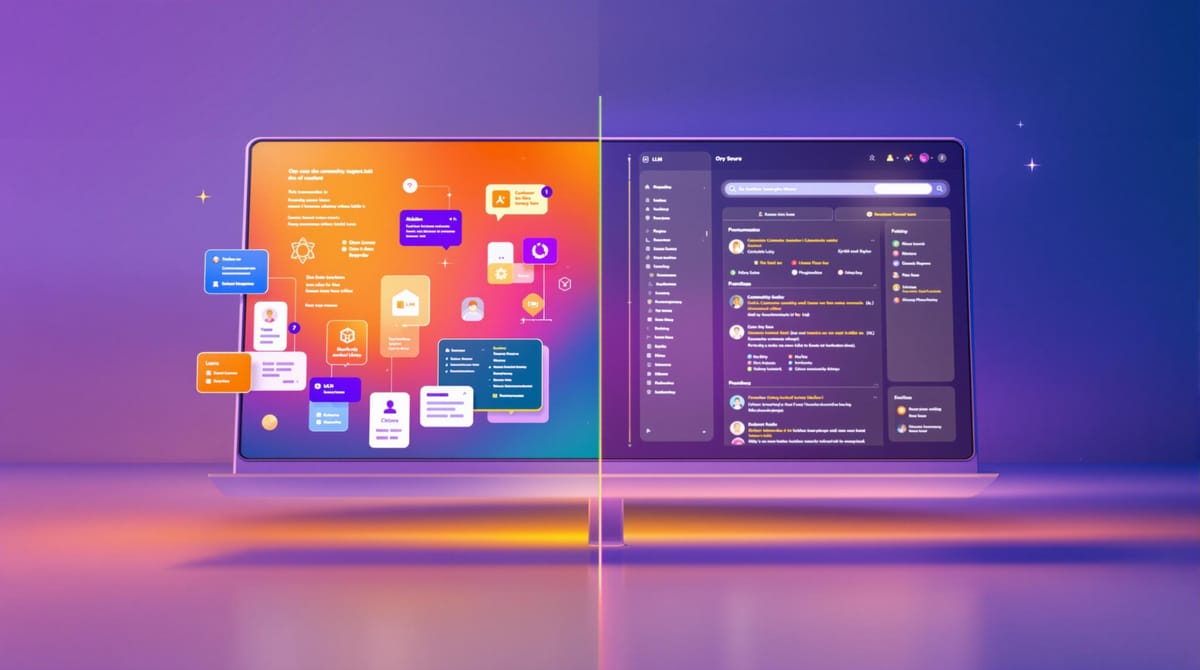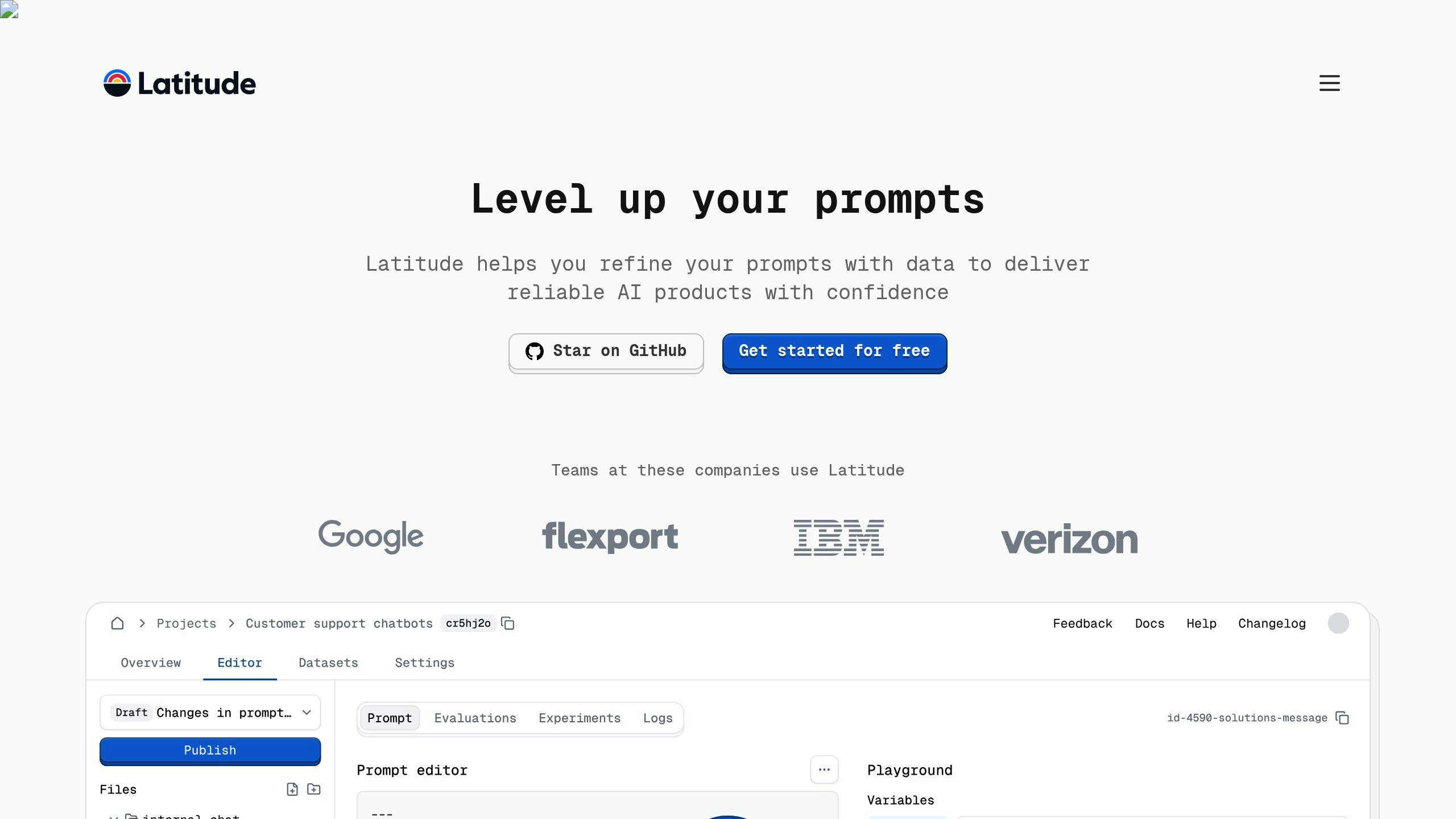Open-Source LLM Platforms vs Proprietary Tools
Explore the differences between open-source and proprietary LLM platforms, highlighting their costs, customization, and support options.

Choosing between open-source and proprietary LLM platforms depends on your goals. Here's a quick breakdown:
- Open-Source LLMs: Offer free or low-cost access, full customization, and control over data but require technical expertise to manage and maintain.
- Proprietary LLMs: Provide high performance, built-in support, and enterprise-ready features, but they come with higher costs and limited customization.
Quick Comparison
| Feature | Open-Source LLMs | Proprietary LLMs |
|---|---|---|
| Cost | Free or low-cost | Usage-based pricing |
| Customization | Full access to code and data | Limited to vendor-defined options |
| Support | Community-driven | Vendor-managed, SLA-based |
| Data Control | Complete ownership | Restricted by vendor policies |
| Ease of Use | Requires technical expertise | Ready for immediate deployment |
Best for Open-Source: Organizations needing full control, customization, and cost savings.
Best for Proprietary: Companies prioritizing performance, compliance, and vendor support.
Read on for a deeper dive into the pros, cons, and use cases of each platform type.
Open-Source LLM Platforms: Core Features
Open-Source Platform Basics
Open-source LLM platforms give users access to their code, allowing them to modify, share, and analyze it. This includes pre-training data, training code, evaluation code, and model weights [1]. By making everything accessible, these platforms encourage detailed analysis and replication, leading to improvements driven by the broader community [3].
This openness provides several advantages for organizations choosing open-source LLMs.
Advantages of Open-Source Options
A recent study found that 41% of enterprises plan to increase their use of open-source tools, while another 41% are open to switching if performance matches proprietary solutions [4]. Cost savings stand out as a major advantage. For example, platforms like Llama-3-70-B charge about 60 cents per million token input and 70 cents per million token output [2].
| Advantage Category | Description |
|---|---|
| Cost & Customization | No licensing fees and full control over model adjustments |
| Data Governance | Total ownership and control of data |
| Transparency & Development | Clear architecture and fast improvements via community contributions |
Challenges with Open-Source Platforms
- Technical Expertise: Setting up and maintaining these platforms requires advanced skills.
- Quality Management: Regular monitoring is essential to ensure consistent performance.
- Security Risks: Many organizations are cautious about potential security vulnerabilities in generative AI [4].
However, some platforms are tackling these issues head-on, proving open-source tools can meet professional standards.
Example: Latitude

Latitude showcases how open-source platforms can address common challenges. It supports collaborative prompt engineering by bringing together domain experts and engineers. Key features include API endpoint deployment, automated evaluations, and tools for team collaboration. These capabilities make Latitude a strong option for production-level LLM development while promoting teamwork and leveraging community contributions.
Proprietary LLM Tools: Core Features
Proprietary Tool Basics
Proprietary LLM tools are closed-source models developed and managed by specific companies. These tools are supported by significant corporate resources and expertise, typically requiring licensing agreements or subscription fees for access.
Advantages of Proprietary Systems
Proprietary LLM platforms are designed for immediate production use and come with strong support systems. Their standout features include:
| Advantage | Description | Impact |
|---|---|---|
| Performance Optimization | Advanced capabilities across benchmarks | Ensures high accuracy and reliability |
| Technical Infrastructure | Vendor-handled updates and maintenance | Minimizes operational workload |
| Enterprise Integration | Pre-built compliance and security features | Speeds up deployment in regulated industries |
These features make proprietary platforms an attractive option for organizations that prioritize performance and seamless integration over customization.
Proprietary Tool Restrictions
For high-volume use cases, costs can increase significantly, which may not suit organizations with tight budgets. Additionally, these tools come with some operational limitations:
- Limited customization and vendor lock-in: Organizations may face restrictions on flexibility and are dependent on the provider for updates and changes.
- Data control concerns: Users have less oversight over how their data is processed and stored compared to open-source alternatives.
These challenges underscore the need to carefully assess support systems and available resources when deciding between proprietary and open-source options.
Community and Support Comparison
Open-Source Community Support
Open-source LLM platforms thrive on collaboration and open problem-solving. Platforms like Hugging Face and EleutherAI rely on active communities that share knowledge and tackle challenges together, leading to fast-paced improvements.
One key benefit of these communities is their ability to address issues quickly. For example, when security flaws are found, the collective expertise often results in faster fixes compared to traditional support channels. These communities are particularly strong in areas like prompt engineering and model customization, where specialized solutions are often needed.
Proprietary Support Systems
Proprietary LLM platforms, on the other hand, offer structured support through dedicated vendor teams. This includes detailed documentation, training programs, and customer service. These platforms focus on reliability, often backed by service level agreements (SLAs) to ensure timely support. However, this comes at a cost, such as GPT-4's pricing of $0.03 per 1,000 input tokens and $0.06 per 1,000 output tokens [5].
Support Features Comparison
Here’s a quick look at how open-source and proprietary platforms differ when it comes to support:
| Support Feature | Open-Source Platforms | Proprietary Tools |
|---|---|---|
| Response Time | Community-driven | SLA-based, guaranteed |
| Cost Structure | Free support | Paid support plans |
| Customization Support | Extensive, community-driven | Limited to vendor offerings |
| Knowledge Base | Community-maintained wikis | Official documentation |
| Problem Resolution | Collaborative troubleshooting | Formal ticketing systems |
The collaborative nature of open-source communities is a major strength, as highlighted by this quote:
"The collective intelligence of the open-source community acts as a powerful force for improvement." [6]
This collaboration offers unique benefits in niche areas. For instance, Latitude's work in prompt engineering shows how community input can lead to advanced, industry-specific LLM features. By connecting domain experts and engineers, these platforms create a flexible and interactive support environment.
Choosing between open-source and proprietary platforms depends on your organization's needs. Open-source platforms are often better for projects requiring deep customization or privacy control [5][6]. In contrast, organizations in regulated industries might lean toward proprietary systems for compliance and standardization [5][1]. Your decision will ultimately hinge on factors like cost, flexibility, and the level of support your project demands.
Platform Selection Guide
Following the earlier comparison of open-source and proprietary platforms, this section highlights the key factors to keep in mind when choosing the best platform for your needs.
Decision Criteria
When deciding between open-source and proprietary LLM platforms, organizations should consider several important factors:
| Decision Factor | Key Considerations |
|---|---|
| Budget & Resources | Upfront costs, ongoing expenses, and maintenance needs |
| Technical Capability | Availability of in-house expertise and development resources |
| Security & Compliance | Data privacy, regulatory standards, and hosting requirements |
| Implementation | Deployment speed and integration complexity |
| Customization | Need for tailoring models to specific use cases |
Best Uses for Open-Source
Open-source LLM platforms work best in situations where:
- You need full control over data processing and storage.
- Industry-specific applications require custom model training.
- Cost considerations are a priority.
These platforms are a good fit for organizations with strong technical teams and a need for tailored solutions.
Best Uses for Proprietary Tools
Proprietary LLM tools excel in cases where:
- Speedy deployment without heavy technical setup is required.
- Enterprise-level security and compliance are non-negotiable.
- Ongoing vendor support and maintenance are crucial.
For industries with strict regulations or organizations lacking AI expertise, proprietary tools often provide a more straightforward route to implementation. It's essential to choose a platform that matches your technical skills and aligns with your industry needs.
Mixed Platform Approaches
A hybrid approach can combine the advantages of both open-source and proprietary platforms. For example:
- Use open-source models for internal operations.
- Rely on proprietary tools for customer-facing applications.
- Blend platforms to balance costs and capabilities.
When adopting a mixed strategy, focus on:
- Ensuring strong security across all platforms.
- Achieving seamless integration between systems.
- Leveraging each platform’s strengths for specific organizational needs.
This approach allows organizations to maximize the benefits of both platform types while minimizing their challenges.
Conclusion
Key Differences Summary
The choice between open-source and proprietary LLM platforms significantly affects how businesses implement AI. In 2023, the global LLM market reached USD 4.35 billion and is expected to grow at a CAGR of 35.9% through 2030 [2].
| Aspect | Open-Source | Proprietary |
|---|---|---|
| Cost Structure | Lower initial costs, higher operational expenses | Higher licensing fees, includes support |
| Customization | Full access to modify the model | Limited to vendor-defined parameters |
| Support | Community-driven assistance | Professional vendor support |
| Data Control | Full ownership and privacy | Policies depend on the vendor |
These differences play a critical role in shaping how businesses adopt LLMs, as both platform types continue to gain traction.
Industry Trends
The use of LLMs in enterprises has doubled in just ten months, with 65% of companies now leveraging these tools [3]. Meta's language models saw an impressive 400 million downloads in 2024 - ten times more than the previous year [7]. Platforms like Latitude show how organizations can integrate AI effectively without major financial strain [2].
With these trends in mind, businesses need to carefully assess their specific requirements to choose the most suitable platform.
Recommendations
When deciding between open-source and proprietary LLM platforms, organizations should:
- Assess internal expertise, resources, and cost implications before selecting a solution.
- Prioritize compliance and data ownership concerns.
- Balance upfront costs with ongoing operational expenses.
For businesses that need complete control and customization, open-source platforms provide the most flexibility. On the other hand, proprietary solutions are ideal for those seeking quick deployment with minimal technical effort. The growing popularity of hybrid approaches shows that combining both types of platforms can be a smart way to enhance AI strategies [3][2].
